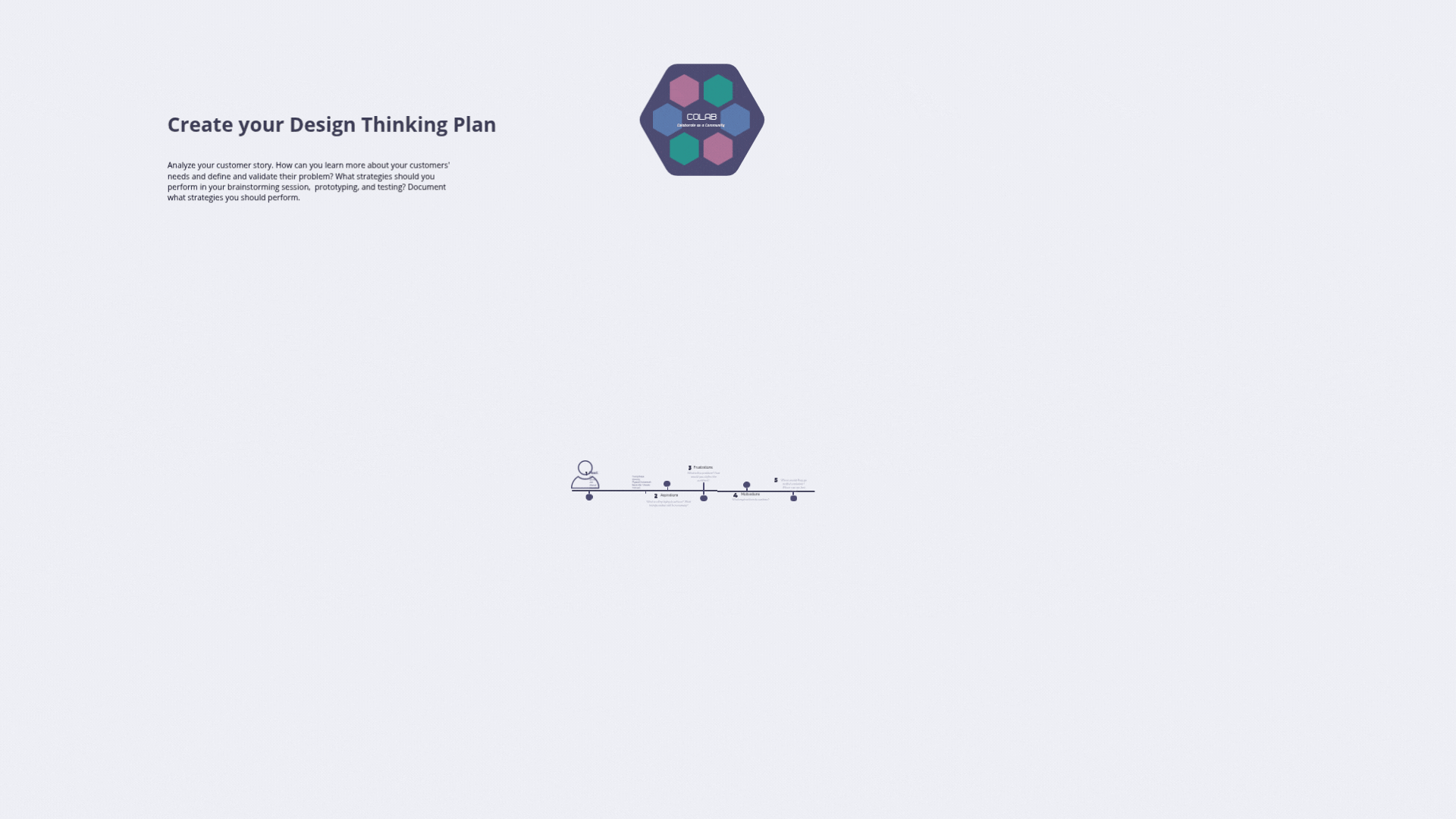Create your Plan
Create your plan. What design thinking strategies will you perform to learn about your customer and brainstorm the perfect solution.
Click here to Start………….Create your Plan
Instructions
Step 1. Review your customer story.
Step 2. Brainstorm future design thinking strategies you will use to design your future product and customer experience.
Step 3. Review your design thinking plan. Consult with A.I. about your design thinking strategies.
A.I. Assisted Design Thinking
Utilize A.I. to create your design thinking plan and process of innovation. Let AI be your guide as it analyzes your customer story and advises you on what design thinking strategies that maybe critical to learning about your customer and future product development. Utilize AI to analyze your data across strategies as you work together to understand the intimate details of your customer.
Click here to Start……………….. A.I. Assisted Design Thinking Prompt
Create your Plan
Group Size: 4-10
Duration: 60-120 mins
Materials Needed: Markers, Pens, Post-its, Tablet, Phone
Details:
Analyze your customer story. How can you learn more about your customers' needs and define and validate their problem? What strategies should you perform in your brainstorming session, prototyping, and testing? Document what strategies you should perform.
Create your Plan
Analyze your customer story. How can you learn more about your customers' needs and define and validate their problem? What strategies should you perform in your brainstorming session, prototyping, and testing? Document what strategies you should perform.
-
Brainstorm the design thinking strategies to be performed
Analyze the future data and insights to be concluded from these strategies
Design your product and customer experiences.
-
Work with your team or a 4-10 member group to develop a design thinking plan. Collaborate with others and also with A.I. to determine what design thinking strategies that will be performed.
-
Step 1. Review your customer story.
Step 2. Document what strategies you will use.
Step 3. Review your design thinking plan.
-
To ensure the solution is customer-centered, desirable understanding user needs, motivations, and pain points.
To define the right problem to solve, a formal plan helps synthesize initial research into a clear, actionable problem statement.
To foster a culture of creativity and collaboration, the plan introduces structured activities like brainstorming and prototyping that encourage diverse team members to contribute and explore non-obvious solutions.
To manage risk by failing fast and cheaply, through rapid prototyping and testing, allowing the team to gather real-world feedback before final development.
To encourage iteration and continuous improvement, return to earlier stages based on new insights gained during testing.
To align diverse stakeholders on a single, human-focused goal.
To uncover unmet or latent needs that the customer may not even be able to articulate, as the empathize phase is designed to observe behavior and context, leading to truly innovative product opportunities.

